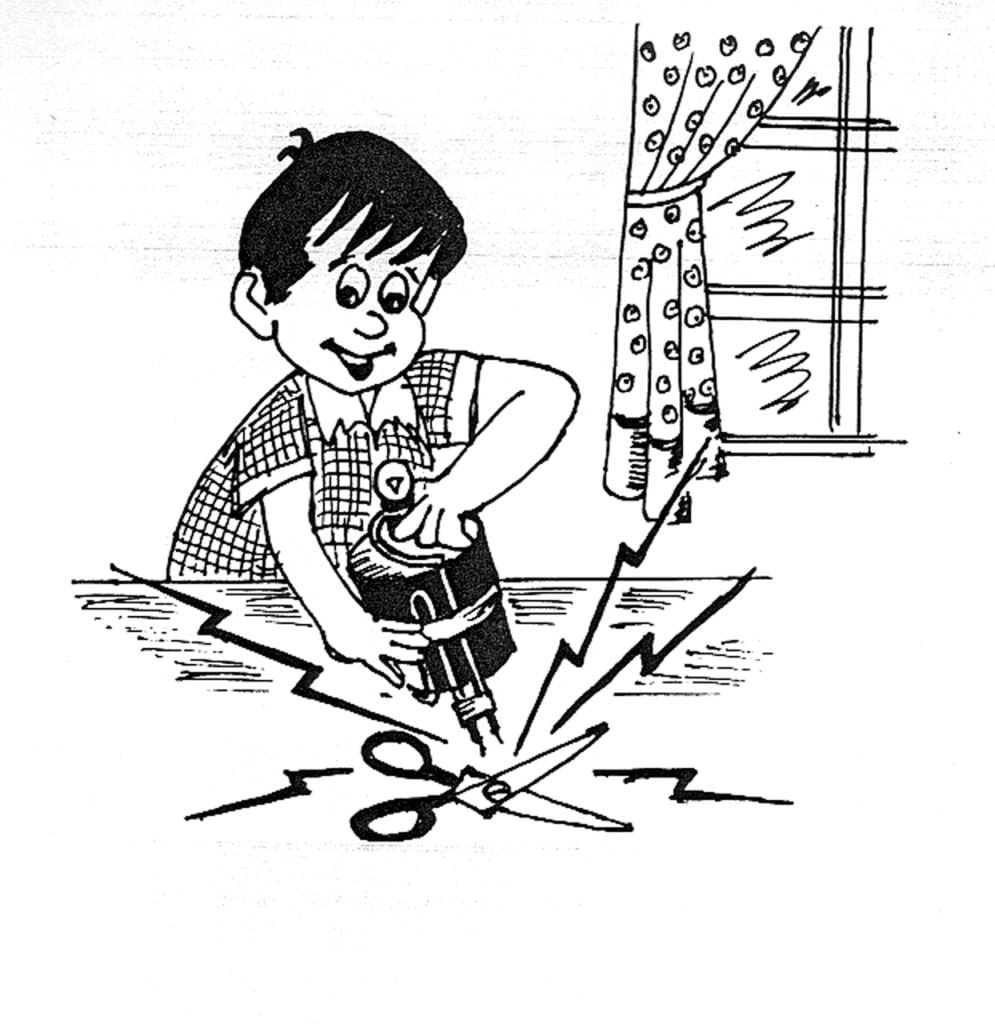
Materials Required:
l Insulated wire (the kind with the plastic coating)
l Flashlight bulb
l D-size battery
l Masking tape
The help of one of your parents
Procedure:
An electrical conductor is a material through which electricity flows. You can build a device that will test different material to find out whether or not they are electrical conductors.
- Ask one of your parents to do the following: Cut two 9-inch lengths of insulated wire. Strip about 3 inches of coating from one end of one piece of wire and wrap this tightly around the base of a flashlight bulb. Strip about ½ inch of coating from the remaining ends.
- Place the flashlight bulb at the pointed tip of a D-size battery. Tape one end of the loose wire at the flat end of the battery. Tape the remaining wire in place on the battery as shown.
- Now tape the two free wires ends ½ inch apart, placing the tape on the coated portion of the wire, leaving the bare ends free.
To operate your tester, press the bulb firmly against the battery. Touch the two bare wires to the object being tested. If the material is a conductor, the bulb will flash. Try testing a pair of scissors, this book, and your bicycle!
This Is What Happens:
Electricity is generated in the battery and this flows into the wires. When you touch the ends to a conductor, a circuit is completed. This means that the electricity can now flow through a complete path. So the electricity flows through the wires, the object, and the bulb, and the bulb is lighted up.

